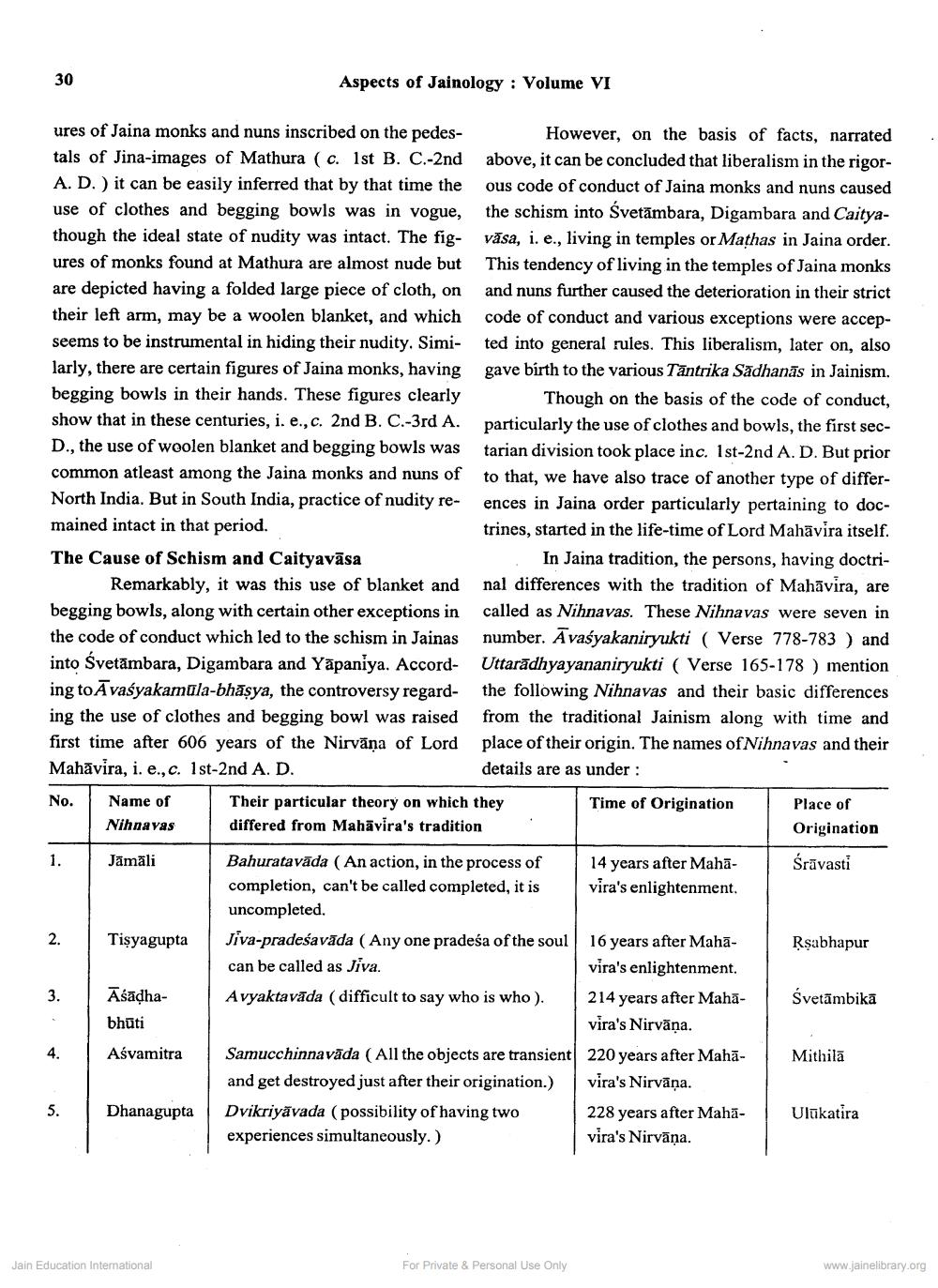________________
309
ures of Jaina monks and nuns inscribed on the pedestals of Jina-images of Mathura (c. 1st B. C.-2nd A. D.) it can be easily inferred that by that time the use of clothes and begging bowls was in vogue, though the ideal state of nudity was intact. The figures of monks found at Mathura are almost nude but are depicted having a folded large piece of cloth, on their left arm, may be a woolen blanket, and which seems to be instrumental in hiding their nudity. Similarly, there are certain figures of Jaina monks, having begging bowls in their hands. These figures clearly show that in these centuries, i. e., c. 2nd B. C.-3rd A. D., the use of woolen blanket and begging bowls was common atleast among the Jaina monks and nuns of North India. But in South India, practice of nudity remained intact in that period.
The Cause of Schism and Caityavāsa
Remarkably, it was this use of blanket and begging bowls, along with certain other exceptions in the code of conduct which led to the schism in Jainas into Śvetāmbara, Digambara and Yapaniya. According to Avaśyakamüla-bhāṣya, the controversy regarding the use of clothes and begging bowl was raised first time after 606 years of the Nirvana of Lord Mahavira, i. e., c. 1st-2nd A. D.
No.
1.
2.
3.
4.
5.
Name of Nihnavas
Jāmāli
Tiṣyagupta
Asadha
bhūti
Asvamitra
Aspects of Jainology: Volume VI
Dhanagupta
Jain Education International
However, on the basis of facts, narrated above, it can be concluded that liberalism in the rigorous code of conduct of Jaina monks and nuns caused
the schism into Svetämbara, Digambara and Caityaväsa, i. e., living in temples or Mathas in Jaina order. This tendency of living in the temples of Jaina monks and nuns further caused the deterioration in their strict code of conduct and various exceptions were accepted into general rules. This liberalism, later on, also gave birth to the various Tantrika Sadhanās in Jainism.
Though on the basis of the code of conduct, particularly the use of clothes and bowls, the first sectarian division took place inc. 1st-2nd A. D. But prior to that, we have also trace of another type of differences in Jaina order particularly pertaining to doctrines, started in the life-time of Lord Mahavira itself.
In Jaina tradition, the persons, having doctrinal differences with the tradition of Mahavira, are called as Nihnavas. These Nihnavas were seven in number. Avasyakaniryukti (Verse 778-783) and Uttaradhyayananiryukti ( Verse 165-178) mention the following Nihnavas and their basic differences from the traditional Jainism along with time and place of their origin. The names of Nihnavas and their details are as under:
Time of Origination
Their particular theory on which they differed from Mahavira's tradition
Bahuratavāda (An action, in the process of completion, can't be called completed, it is uncompleted.
Jiva-pradeśavāda (Any one pradeśa of the soul 16 years after Mahā
can be called as Jiva.
vira's enlightenment.
Avyaktavāda (difficult to say who is who).
Samucchinnavada (All the objects are transient and get destroyed just after their origination.) Dvikriyavada (possibility of having two experiences simultaneously.)
14 years after Mahāvira's enlightenment.
For Private & Personal Use Only
214 years after Mahāvira's Nirvana.
220 years after Mahavira's Nirvana.
228 years after Mahavira's Nirvana.
Place of Origination
Śrāvasti
Rṣabhapur
Śvetāmbikā
Mithila
Ulakatira
www.jainelibrary.org




